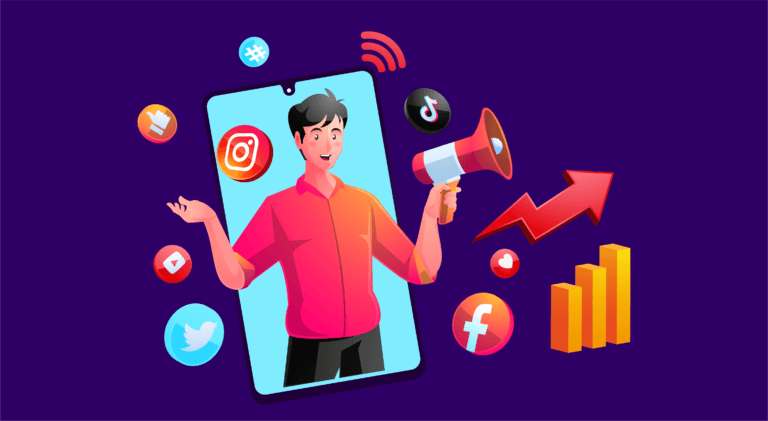6 Ways Inbound Marketing Can Help Your Ecommerce Business

Table of Contents
- Introduction
- Why does your e-commerce business need an inbound marketing strategy?
- 6 Ways Inbound Marketing Can Help Your Ecommerce Business
- Key Takeaways
- Conclusion
- FAQs
According to a definition by Marketo, ‘inbound marketing is a strategy that utilizes many forms of pull marketing to create brand awareness and attract new business. Whereas outbound marketing seeks out customers, inbound marketing focuses on visibility, so potential buyers come to you. Instead of ‘renting attention’, companies employing inbound marketing focus on new methods geared toward building awareness, developing relationships, and generating leads.’
Thus, it can be said that inbound marketing is a business approach for attracting customers by providing pertinent information and customized experiences. In the sector of e-commerce, inbound marketing is all about a set of activities that will pull customers to your website.
E-commerce inbound marketing companies use inbound marketing to develop individualized content that appeals to potential consumers. It also enhances the entire shopping experience by making it easier for individuals to purchase online.
Examples of inbound marketing include:
- Blogging
- SEO
- Opt-in email marketing
- Social media marketing
- Content marketing
- Use of influencers to sell products to a specific audience, among other things
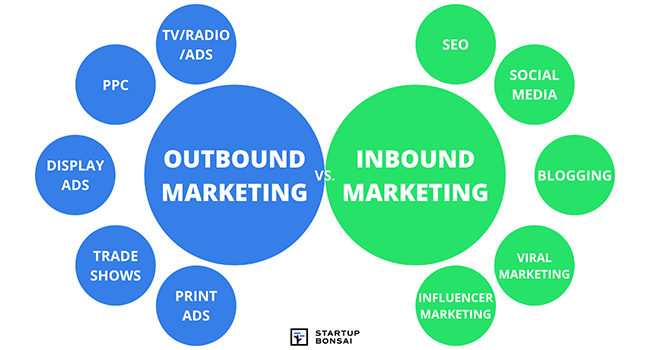
Why Does Ecommerce Business Need an Inbound Marketing Strategy
Ecommerce is a very competitive sector. Consider these statistics:
- According to the Content Marketing Institute, more than 61% of consumers in the US referred to a blog before making an online purchase
- NASDAQ says that by 2040, 95% of all purchases will be done online.
- The e-commerce industry is growing 23% year on year
These stats prove that the e-commerce business is growing exponentially, and with its fast-evolving nature, it has become important to scale to its needs. When you implement inbound marketing methods meant to find potential consumers when they’re already browsing online, you convert them into paying customers.
Inbound marketing may assist you in attracting new consumers and converting more leads to sales.

6 Ways Inbound Marketing Can Help Your Ecommerce Business
Let’s explore how you can use inbound marketing to grow your e-commerce business. These are essential steps that you should be following to create an effective inbound marketing strategy for your business.
1. Make use of content to flaunt your products
You can utilize your products to produce great content in the same way that your content gets people interested in your items. If you’re going to send leads to your product pages, why not pique their curiosity a bit early by including your items into:
- Video instructions
- Product reviews
- Guides to photoshoots
- Blog content
This type of information is very effective when combined with social media. It catches people’s attention and excites them about what they’re witnessing. It’s okay to discuss a product (and it may be pretty powerful if done effectively), but it’s much better to demonstrate it. People believe what they see, so they will be ready to purchase if they see your items running efficiently and effectively.
2. Email marketing
Many people still use emails, and unlike websites with confusing, ever-changing algorithms, emails are still relatively easier to use by marketers. To up one’s conversion rate, one must invest time and energy to create the perfect email marketing strategy.
To make the most out of email marketing, practice the following mantras:
- Make it personal
- Keep your subject lines to a minimum
- Choose the best time to send emails
- Distribute freebies
- Send mobile-friendly emails
3. You must create buyer personas
Marketing revolves around the needs of your audience. So, the first question would be, who is your key demographic? For example, if your demographic is 18-25, marketing your products on Facebook might not be as effective as Tik Tok or Instagram.
To this effect, you can also create a buyer persona. A client persona, also known as a ‘buyer persona’, is a semi-fictional portrayal of your ideal client and what matters to them. Ideally, you should create 3 to 5 customer personas by identifying them by name. for example, ‘Marketing Mary’ or ‘Professional Perry’. Now learn what matters to them as they progress through the stages of your purchasing process.
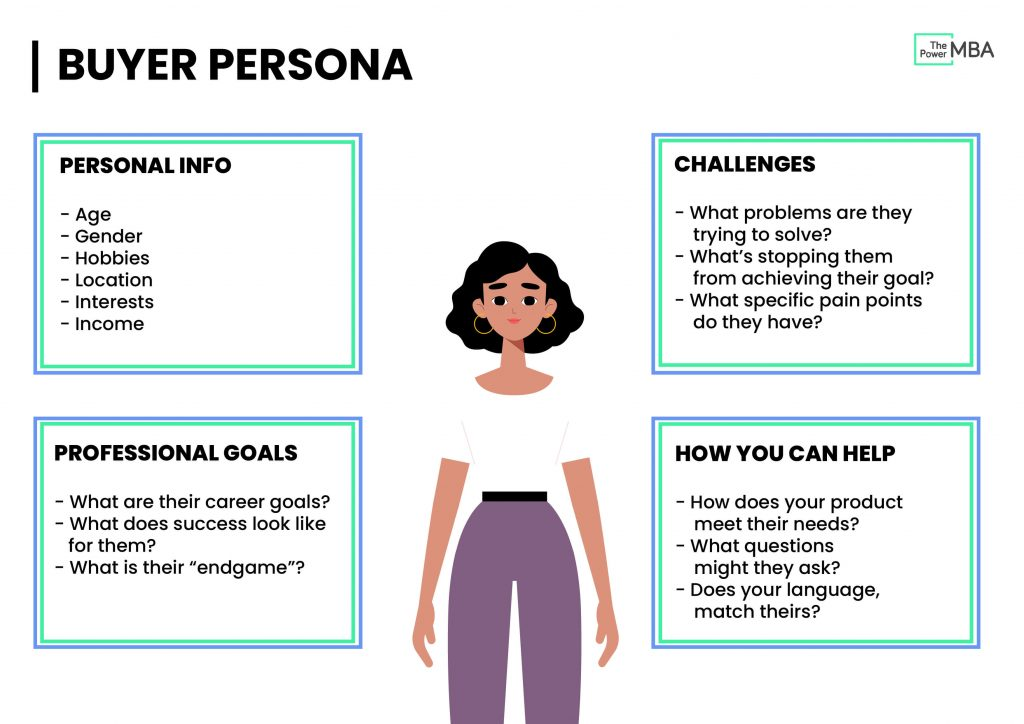
4. Search Engine Optimization (SEO)
SEO might feel like a daunting endeavor for e-commerce marketers. It would help if you had a different homepage for each product you offer to boost organic awareness. Its URL must contain a unique target term and be 125 characters long. An unoptimized URL, for example, may have a string of letters and numbers, whereas an optimized URL may mention a product name or phrase directly.
Keep it brief because search engines only scan the first 50-60 characters. Although you have some leeway here, consider incorporating a product name, category name, and website name in your page’s title tag.
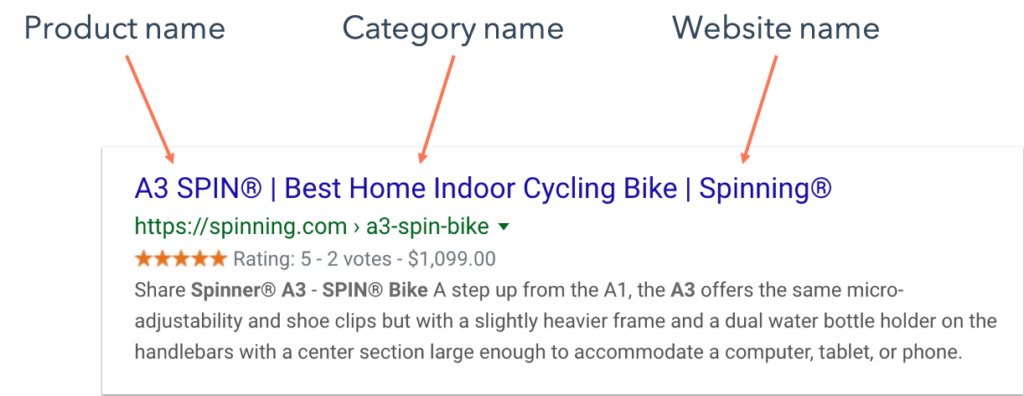
5. Social media
Ecommerce enterprises may also use social media to achieve long-term success and boost visitors to their websites.
Furthermore, by carefully positioning social network links on your product pages, e-commerce businesses can optimize their websites for social sharing. People may then share things with friends and family via social media once they purchase.
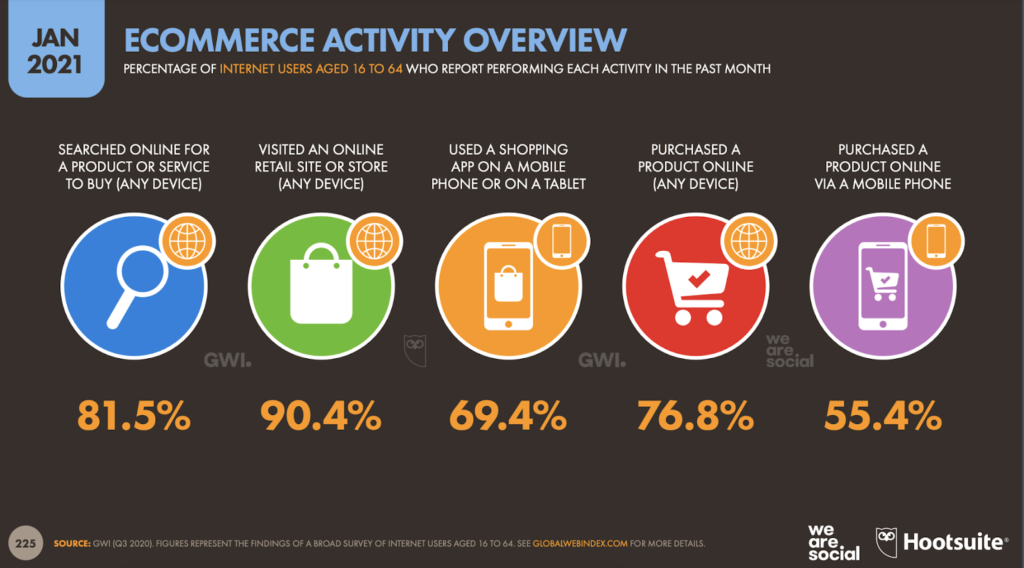
6. Analytics
Measuring leads to improvement!
Learn how to track your achievements and failures (i.e., what’s working, what’s not, and why). Demonstrate how your inbound marketing efforts are helping your company in achieving its overall business goals and objectives.
Make an inbound marketing campaign to attract and engage customers. These campaigns focus on bringing all of your marketing channels together to promote a single message and purpose. Blogging, social media, sponsored media, email, and other attract and engage stage methods to operate smarter, not harder, in this manner.
Key Takeaways
- Inbound marketing focuses on growing and promoting content that attracts visitors to your website. Social media posts, blogs, reports, webinars, and other interactive types of content are available.
- By 2021, mobiles are expected to account for 54% of all internet purchases. Consumers also shop via sites such as Amazon, Facebook, Instagram, and Pinterest in an omnichannel environment, so you require to use different strategies.
- So use content to flaunt your products. Also, use channels like email marketing.
- Create buyer personas to nail your audience right and then create an SEO strategy to ensure that your online business attracts reasonable organic traffic.
Conclusion
As you can see, inbound marketing is beneficial to any company or website. It can help you increase the number of visitors that visit your website. Produce helpful, relevant content, automate your emails, and collect lead information, and you’ll have all you need to convert after conversion.
FAQs
Inbound marketing in e-commerce is about attracting audiences already searching for your product online with various methods like enhancing site experience, great content, SEO, etc.
Some examples of inbound marketing include:
1. Blogs on specific topics
2. Social media campaigns
3. Webinars
4. Videos
5. Content marketing
6. Optimized website
Inbound marketing is for customers already looking for your product or similar products. The idea is to pull them in via various marketing channels instead of outbound marketing, which pushes the brand to the consumers.
Latest Blogs
Explore how Google’s 2025 AI search updates triggered ranking chaos. Learn actionable strategies to adapt your SEO for AI Overviews, zero-click searches, and SERP volatility. Stay ahead now.
Learn how to rank on AI search engines like ChatGPT, Perplexity, and Gemini by optimizing your content for authority, structure, and relevance. Stay ahead in AI-driven search with this strategic guide.
Explore the best healthcare SEO services for your medical practice. Improve online visibility and effectively reach more patients in need of your services.

